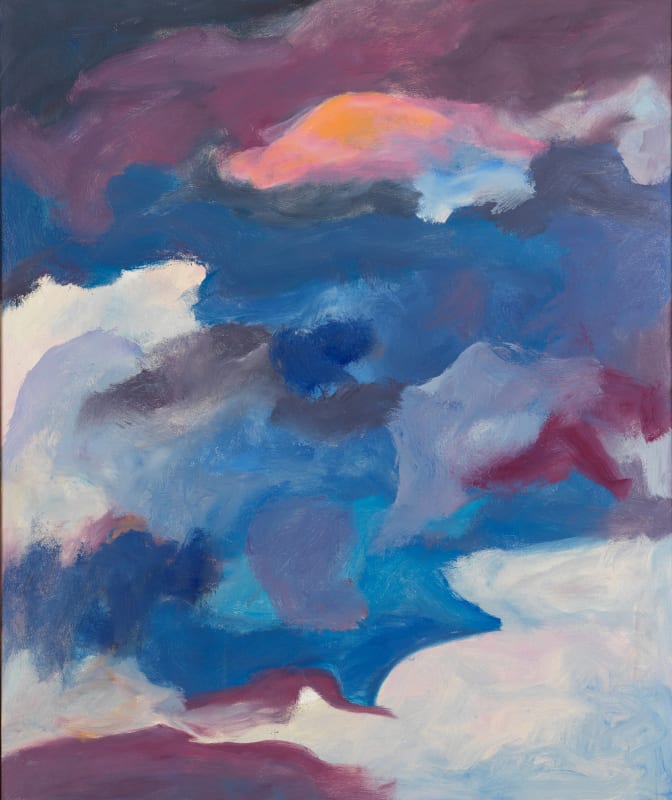Jon Schueler, born in Milwaukee in 1916, was the son of a tire manufacturer. During World War II, he served as a B-17 navigator in the United States Army but was discharged in 1944 due to medical reasons. His fascination with the sky, inspired by his upbringing in Wisconsin and his wartime experiences flying over France and Germany, found expression in his later artworks depicting the atmospheric beauty above Mallaig on the West Scottish coast, which made him renowned.
At the age of 29, he ventured into painting, initially enrolling in part-time classes at the California School of Fine Arts. By 1949, he had become a full-time student, studying under the guidance of Clyfford Still and Robert Diebenkorn. Encouraged by Still, he relocated to New York in 1951, immersing himself in the world of Abstract Expressionism and socializing with renowned artists like Mark Rothko, Jackson Pollock, Barnett Newman, and Ad Reinhardt. In 1957 and 1959, Schueler held solo exhibitions at Leo Castelli's gallery, a well-known dealer representing Abstract Expressionists at the time.
In 1957, Schueler visited Mallaig in Western Scotland for the first time, eventually purchasing an old schoolhouse named Romasaig, where he lived and worked from 1970 to 1975, returning every year thereafter. His studio provided a breathtaking view of the Sound of Sleat, a narrow channel separating the Isle of Skye, the Mainland, and smaller islands like Rhum, Eigg, and Muck. The expressive skies over this landscape captivated the artist, leaving a lasting impression, even when he was back in Manhattan. Schueler described his experience as a profound encounter with eternity, both frightening and incredibly beautiful.
Schueler's paintings following his initial visit to Scotland were a unique blend of the gesture and color characteristic of Abstract Expressionism, the rugged Scottish terrain, and an admiration for the Romantic landscapes of J. M. W. Turner. Clyfford Still introduced Schueler to Turner's work at art school, and Schueler's visit to the British Museum, where he saw Turner's watercolors, left a significant impact on him. Schueler's landscapes share the same subtlety and sensitivity in capturing atmosphere as Turner's, partly owing to his technique of layering washes and colored glazes to convey the ever-changing skyline. He aimed to evoke the same sense of nature that he believed Turner had achieved more profoundly than any other artist.
Schueler described his painting as an attempt to "rend a veil," aiming to reveal fundamental human truths through meditation on his skyscapes. He considered this quest a deep impulse to confront life's truths, whether they related to humanity, love, loneliness, or eternity. Schueler sought to reach a fundamental universality through his art, aligning him with Abstract Expressionism. However, he questioned the unwavering commitment of other Abstract Expressionists to non-objectivity as a prerequisite for freedom of thought and expression.
In 1975, Schueler had a solo exhibition at the Whitney Museum and also appeared in the exhibition "Landscapes, Interior and Exterior: Avery, Rothko and Schueler" at the Cleveland Institute of Fine Arts. In 1981, he worked on an art project at the Talbot Rice Centre at the University of Edinburgh, which was displayed to the public in an exhibition called "The Search." His works can be found in various public collections, including the Scottish National Gallery of Modern Art (Edinburgh), the National Gallery of Australia (Canberra), and the Baltimore Museum of Art. After his passing in 1992, his widow, Magda Salveson, edited and compiled his memoirs, which were published as "The Sound of Sleat: A Painter's Life by Jon Schueler" in 2000.
